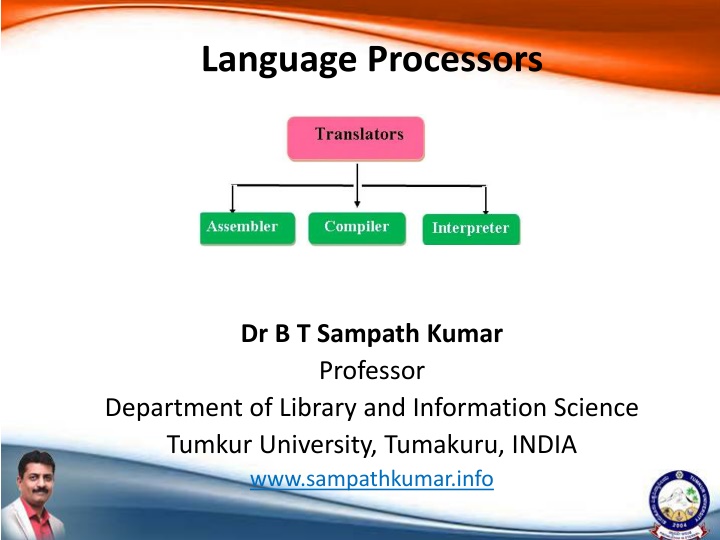
Language Processors and Programming Languages
Explore the world of language processors, programming languages, and the difference between low-level and high-level languages. Dive into the intricacies of machine language and assembly language while considering the merits and demerits of each.
Download Presentation

Please find below an Image/Link to download the presentation.
The content on the website is provided AS IS for your information and personal use only. It may not be sold, licensed, or shared on other websites without obtaining consent from the author. If you encounter any issues during the download, it is possible that the publisher has removed the file from their server.
You are allowed to download the files provided on this website for personal or commercial use, subject to the condition that they are used lawfully. All files are the property of their respective owners.
The content on the website is provided AS IS for your information and personal use only. It may not be sold, licensed, or shared on other websites without obtaining consent from the author.
E N D
Presentation Transcript
Language Processors Dr B T Sampath Kumar Professor Department of Library and Information Science Tumkur University, Tumakuru, INDIA www.sampathkumar.info
Language processors The language processor is a special translator system used to turn a program written in a Assembly/high-level language (source code) into machine code (object program). There are three types of language processors: Assembler Interpreter Compiler
Programming language A programming language is a formal language, which comprises a set of instructions that produce various kinds of output. It is used in computer programming to implement algorithms.
Types of programming languages There are two languages, which can be categorized into the following ways: Low level language High level language types of programming
Low level language This language is the most understandable language used by computer to perform its operations. It can be further categorized into: Machine Language Assembly language
Machine Language Machine language consists of strings of binary numbers (i.e. 0s and 1s) It is the only one language, the processor directly understands. Execution speed is very fast and primary memory is efficiently used.
Cont.. Merits It is directly understood by the processor. The programs written in this language need not to be translated. It doesn t need larger memory.
Cont.. Demerits It is very difficult to program since all the instructions are to be represented by 0s and 1s. Use of this language makes programming time consuming. It is difficult to find error(s) and to debug. It can be used by experts only.
Assembly Language This language uses mnemonic codes (symbolic operation code like ADD for addition) in place of 0s and 1s. The program is converted into machine code by assembler. The resulting program is referred to as an object code.
Cont.. Merits It makes programming easier than machine language since it uses mnemonic codes for programming: ADD for addition, SUB for subtraction, DIV for division, etc. It makes programming process faster. Error(s) can be identified much easily compared to machine language. It is easier to debug than machine language.
Cont.. Demerits Programs written in this language are not directly understandable by computer so translators should be used. Being machine dependent language, programs written in this language are very less or not portable. Programmers must know its mnemonic codes to perform any task.
Assembler An assembler is a language processor that converts assembly language into machine code. It takes the basic commands and operations from assembly code and converts them into binary code that can be recognized by a specific type of processor. Source Program Assembler Object Program (Machine Language) (Assembly Language)
High level language Instructions of this language closely resembles to human language or English like words. It uses mathematical notations to perform the task. The high level language is easier to learn. It requires less time to write and is easier to identify and remove the error(s).
Cont.. The high level language is converted into machine language by one of the two different language translator programs: Interpreter or Compiler.
Cont.. Merits Because languages are able to solve a variety of problems. Programmer does not need to think in term of computer architecture which makes them focused on the problem. Programs written in this language are portable. of their flexibility, procedural
Cont.. Demerits It is easier but needs higher processor and larger memory. It needs to be translated using Compiler or Interpreter therefore its execution time is more.
Compiler A compiler is a language processors which takes entire program and converts it into object code. The object code is also refereed as binary code and can be directly executed by the computer after linking. Object code (Machine Language) Source Program (High Level Language) Compiler
Interpreter An interpreter is a computer program, which coverts each high-level program statement into the machine code. Interpreted programs run slower than the compiled programs. Object code (Machine Language) Source Program (High Level Language) Interpreter
